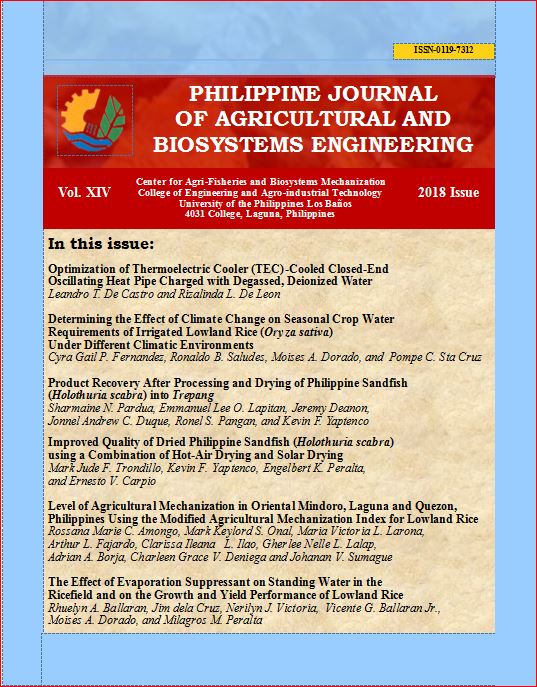Determining the Effect of Climate Change on Seasonal Crop Water Requirements of Irrigated Lowland Rice (Oryza sativa) under Different Climatic Environments
Abstract
Changes in temperature and rainfall pattern can lead to negative impacts on crop production. Limited water resources for agricultural production can also lead to a considerable yield reduction. In this study, climate projections at different greenhouse gas emission scenarios were used in determining the effect of climate change on seasonal crop water requirement (CWR) and irrigation requirement (IR) of lowland rice at different climatic environments. Climate projections from year 2020 to 2059 were generated using MarkSim. Crop evapotranspiration and irrigation requirements of lowland rice were simulated using FAO CROPWAT. Analysis of projected maximum and minimum temperatures and rainfall showed increasing trend through time. Seasonal CWR and IR showed highest projected change at 2050. Highest projected change in CWR during wet and dry seasons were 4.01% and 3.84% in Muñoz, Nueva Ecija, 3.30% and 3.54% in Los Baños, Laguna and 4.12% and 4.34% in Cabagan, Isabela, respectively. Highest projected change in IR during wet and dry seasons were 10.16% and 1.38% in Muñoz, 22.81% and 4.76% in Los Baños and 5.07% and 7.44% in Cabagan, respectively. The results showed that the irrigation requirements must be considered in improving the capacity of irrigation systems to satisfy the increasing water demand of rice brought about by climate change.


